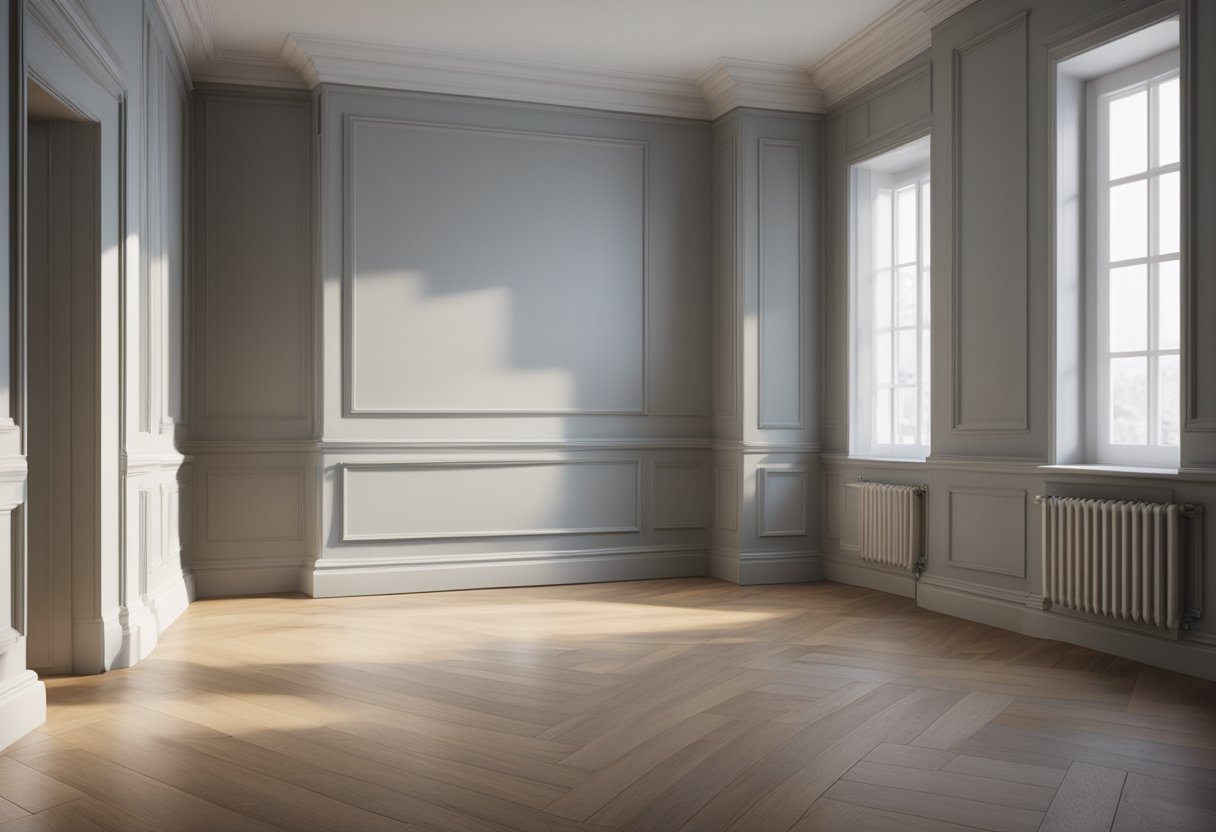Skirting Board Covers Offering Easy Installation and Updated Decorative Appearance

Skirting boards are a subtle yet essential element in interior design, serving both practical and aesthetic purposes. Traditionally, they protect walls from damage, conceal wiring, and provide a smooth transition between floors and walls. However, with evolving design trends, skirting board covers have emerged as a modern solution that combines functionality with decorative appeal. These covers not only offer an updated look but also simplify installation and maintenance, making them an increasingly popular choice in contemporary homes. This article explores the benefits, types, and installation methods of skirting board covers, highlighting how they can transform the appearance of any interior space.
Understanding Skirting Board Covers
Skirting board covers are specially designed panels or moldings that overlay existing skirting boards or can be used as standalone units. Unlike traditional skirting boards that require cutting, painting, and finishing, these covers are designed for quick and hassle-free installation. They can be made from a variety of materials, including PVC, MDF, wood, or composite materials, each offering distinct advantages in terms of durability, appearance, and ease of maintenance.
One of the main purposes of skirting board covers is to provide a decorative upgrade without extensive renovations. Homeowners can achieve a polished, modern look while concealing imperfections in existing skirting boards, such as chips, cracks, or uneven surfaces. This makes skirting board covers a cost-effective solution for updating interiors without significant structural work.
Benefits of Skirting Board Covers
Skirting board covers offer several advantages that appeal to both homeowners and interior designers.
- Easy Installation: One of the most significant benefits is the simplicity of installation. Many skirting board covers come with adhesive backing, clip systems, or pre-drilled holes that allow for fast and secure attachment to walls or existing skirting boards. This eliminates the need for complex tools or extensive carpentry skills.
- Updated Decorative Appearance: Skirting board covers are available in various styles, finishes, and colors. From minimalist modern designs to traditional ornate profiles, there are options to match any interior theme. They can instantly refresh a room, giving it a contemporary and stylish look.
- Concealment of Imperfections: Existing skirting boards may have accumulated wear and tear over time. Covers can hide scratches, dents, and gaps, providing a uniform and aesthetically pleasing finish. This is particularly beneficial in older homes where skirting boards may have suffered from years of use.
- Durability and Low Maintenance: Materials such as PVC and composite boards are resistant to moisture, warping, and pests, ensuring long-lasting performance. They are also easy to clean, requiring only a simple wipe-down with a damp cloth to maintain their appearance.
- Versatility: Skirting board covers are suitable for various spaces, including living rooms, kitchens, hallways, and bathrooms. Some designs even accommodate concealed wiring, allowing for seamless integration of electrical and data cables without disrupting the aesthetic of the room.
Materials Used in Skirting Board Covers
The choice of material plays a crucial role in both the look and functionality of skirting board covers.
- PVC: Lightweight, waterproof, and highly durable, PVC skirting board covers are ideal for areas prone to moisture, such as kitchens and bathrooms. They are easy to cut and install, and they can be painted or finished to match any interior style.
- MDF (Medium-Density Fiberboard): MDF covers are a popular choice for interior spaces due to their smooth surface, which is suitable for painting or veneering. They offer a polished appearance and can be molded into various profiles to suit different design preferences.
- Wood: Traditional wooden skirting board covers provide a natural, warm look. Hardwood options such as oak, maple, or cherry are durable and can be stained or painted. Wooden covers may require slightly more maintenance than synthetic materials but offer unmatched aesthetic value.
- Composite Materials: These blends of wood fibers and synthetic resins offer the durability of plastics with the appearance of wood. They are resistant to moisture and wear, making them a practical choice for high-traffic areas.
Design Options for Modern Interiors
Skirting board covers come in a wide range of designs to complement different interior styles. Minimalist designs with clean, straight lines are ideal for contemporary and modern homes, providing a subtle yet elegant transition between walls and floors.
For classic or traditional interiors, skirting covers with decorative molding or intricate profiles add sophistication and character to a room. Some covers feature beveled edges, raised panels, or decorative grooves, providing depth and visual interest. The versatility in design ensures that homeowners can find a style that enhances the overall aesthetic of their space.
Installation Methods for Skirting Board Covers
One of the main appeals of skirting board covers is the ease of installation. Several methods are available depending on the type of cover and the desired finish:
- Adhesive Backing: Many covers come with a peel-and-stick adhesive, allowing for quick attachment to walls or existing skirting boards. This method is ideal for DIY projects and requires minimal tools.
- Screw or Nail Fixing: For heavier covers or those requiring extra stability, screws or nails can be used. Pre-drilled holes simplify the process, and caps or plugs can conceal fasteners for a clean finish.
- Clip Systems: Some modern skirting covers use interlocking clips that snap onto a base profile mounted to the wall. This method allows for easy removal and replacement, making it convenient for renovations or access to concealed wiring.
- Combination Methods: In certain cases, a combination of adhesive and mechanical fixing ensures maximum stability, particularly in high-traffic areas or on uneven surfaces.
Maintenance and Cleaning
Skirting board covers are designed to be low-maintenance. Regular dusting or wiping with a damp cloth is usually sufficient to keep them looking new. PVC and composite materials are particularly easy to clean and resistant to stains, making them suitable for kitchens, bathrooms, and other high-use areas.
For wooden or painted MDF covers, occasional polishing or repainting may be necessary to maintain their finish. Proper maintenance not only preserves appearance but also extends the lifespan of the skirting covers.
Concealed Wiring and Functional Advantages
An increasing number of skirting board covers are designed with functionality in mind. Many models feature channels or hollow sections that allow homeowners to conceal electrical cables, network wiring, or audio-visual connections. This approach keeps wires organized and hidden from view, maintaining a clean and uncluttered look in modern interiors.
Concealed wiring is particularly valuable in living rooms, offices, or entertainment areas where multiple cables can otherwise create a messy appearance. Skirting board covers provide a practical solution while contributing to the overall decorative appeal of the space.
Budget Considerations
Skirting board covers are available at a range of price points, making them accessible for different budgets. PVC and MDF options tend to be more affordable while still offering durability and aesthetic value. High-end wooden or composite covers may come at a premium but provide superior finish, longevity, and design versatility.
Homeowners should consider the balance between initial cost, durability, and long-term maintenance when selecting skirting board covers. Investing in quality materials ensures that the covers remain attractive and functional for years, offering better value over time.
Trends in Contemporary Skirting Board Design
Modern interior design trends emphasize clean lines, minimalism, and cohesive finishes. Skirting board covers that are slim, subtle, and uniform in color are increasingly popular. Matte finishes, neutral shades, and simple profiles create a contemporary aesthetic that complements a wide range of interior styles.
Bold designs and contrasting colors are also used strategically to create visual interest or highlight architectural features. Modular and customizable options allow homeowners to tailor the design to their specific space, ensuring that skirting board covers enhance rather than detract from the overall décor.
Environmental Considerations
Many skirting board covers are now manufactured using environmentally friendly materials or processes. MDF and composite covers often use recycled fibers or sustainable wood sources, while PVC and synthetic options can be recyclable. Choosing eco-conscious materials aligns with broader sustainable living practices and reduces the environmental impact of home renovations.
Practical Applications in Renovations and Upgrades
Skirting board covers are particularly useful in renovation projects. They can quickly update the appearance of a room without the need for major structural changes. This makes them ideal for renters, homeowners looking to refresh older interiors, or designers seeking to implement a modern look with minimal disruption.
Covers can also be used to bridge gaps between new flooring and existing walls, providing a polished finish and protecting the edges of both surfaces. Their versatility and ease of installation make them a practical solution for a variety of applications.
Conclusion
Skirting board covers offer an effective way to enhance the aesthetic and functional qualities of modern interiors. With benefits including easy installation, low maintenance, durability, and versatile design options, they provide a practical and stylish alternative to traditional skirting boards.
Whether made from PVC, MDF, wood, or composite materials, these covers can transform a room by concealing imperfections, accommodating concealed wiring, and creating a cohesive, updated decorative appearance. Their adaptability to various styles—from minimalist contemporary to ornate traditional—ensures that homeowners can find solutions that suit their personal taste and space requirements.
By investing in high-quality skirting board covers, homeowners not only achieve a visually appealing finish but also benefit from lasting strength and functionality. These covers enhance the overall value of a home while providing practical advantages that make daily living more convenient.
As interior design continues to evolve, skirting board covers stand out as a versatile, efficient, and aesthetically pleasing option. They demonstrate how small design elements can have a significant impact on the look and feel of a space, offering both beauty and utility in one comprehensive solution.






